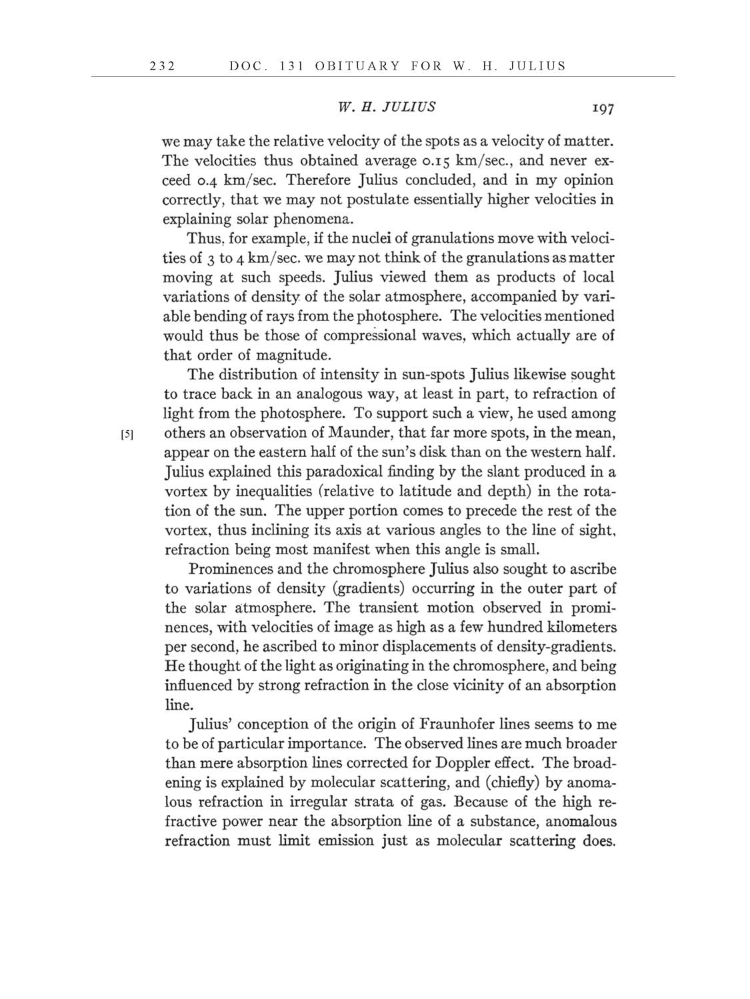2 3 2 D O C . 131 O B I T A R Y F O R W. . J L I S W. H. JULIUS 197 we may take the relative velocity of the spots as a velocity of matter. The velocities thus obtained average 0.15 km/sec., and never ex- ceed 0.4 km/sec. Therefore Julius concluded, and in my opinion correctly, that we may not postulate essentially higher velocities in explaining solar phenomena. Thus, for example, if the nuclei of granulations move with veloci- ties of 3 to 4 km/sec. we may not think of the granulations as matter moving at such speeds. Julius viewed them as products of local variations of density of the solar atmosphere, accompanied by vari- able bending of rays from the photosphere. The velocities mentioned would thus be those of compressional waves, which actually are of that order of magnitude. The distribution of intensity in sun-spots Julius likewise sought to trace back in an analogous way, at least in part, to refraction of light from the photosphere. To support such a view, he used among [5] others an Observation of Maunder, that far more spots, in the mean, appear on the eastern half of the sun’s disk than on the western half. Julius explained this paradoxical finding by the slant produced in a vortex by inequalities (relative to latitude and depth) in the rota- tion of the sun. The upper portion comes to precede the rest of the vortex, thus inclining its axis at various angles to the line of sight, refraction being most manifest when this angle is small. Prominences and the chromosphere Julius also sought to ascribe to variations of density (gradients) occurring in the outer part of the solar atmosphere. The transient motion observed in promi- nences, with velocities of image as high as a few hundred kilometers per second, he ascribed to minor displacements of density-gradients. He thought of the light as originating in the chromosphere, and being influenced by strong refraction in the close vicinity of an absorption line. Julius’ conception of the origin of Fraunhofer lines seems to me to be of particular importance. The observed lines are much broader than mere absorption lines corrected for Doppler effect. The broad- ening is explained by molecular Scattering, and (chiefly) by anoma- lous refraction in irregular strata of gas. Because of the high re- fractive power near the absorption line of a substance, anomalous refraction must limit emission just as molecular Scattering does.
